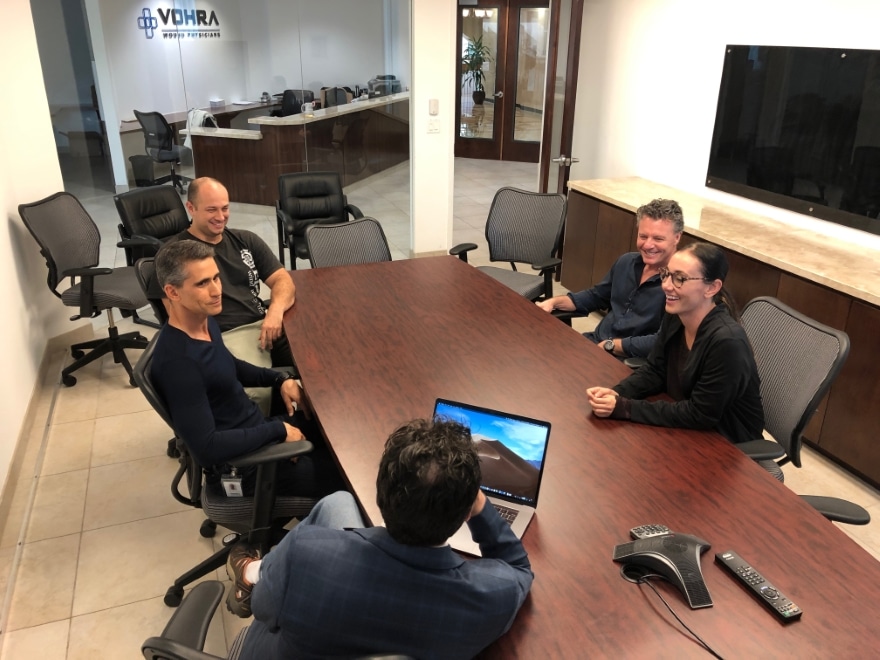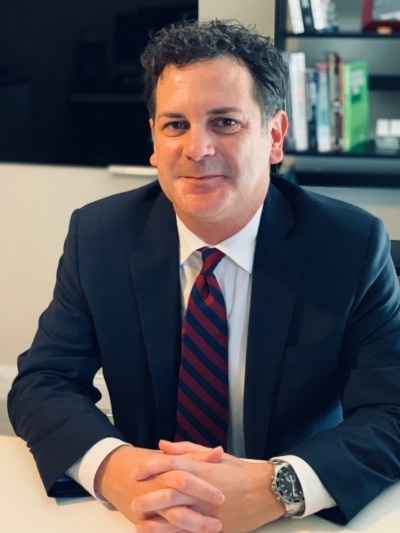Christopher Leonard, DO – Vohra Wound Physicians
As much as any of the vivid stories and stressful clinical situations, Dr. Chris Leonard remembers the countless hours of paperwork. During his years as a resident and working general surgeon, Leonard would routinely flip through files and medical charts, reconciling data and compiling information—any information—that might help him treat his patient’s wound. Often overlooked, quality wound care is a product of addressing these combinations of factors.
In far too many cases, with lives and dollars hanging in the balance, Leonard had to rely exclusively on his years of medical training and often anecdotal clinical precedents, which, while helpful, seldom felt sufficient.

“I remember having wound care patients from nursing homes and other facilities transported to the office by ambulance and then gurneys with a stack of papers,” Leonard recalls. “It always seemed to me that there was kind of a general acceptance that care delivery was often inefficient, but that the ends justified the means. I didn’t realize how much I was revising parts of the process along the way. I didn’t realize that my natural skill set was only being partially tapped.”
In 2009, Leonard joined the Miami-based Vohra Wound Physicians as a wound care surgeon in the long-term care space. He quickly found exactly the model he was looking for: high-quality wound care at a fraction of the cost, where technology was paramount in supporting greater reach across the patient population.
By 2010, Leonard had transitioned into an administrative role, leading EHR development. Six years later, after spearheading a number of internal tech initiatives, Leonard became the company’s first CIO.
Now, he’s helping Vohra change the way we think about wound care—one process at a time.
Big data, big impact
Founded by Dr. Ameet Vohra in 2001, Vohra provides wound care services for more than 2,500 long-term care facilities throughout the U.S.—nursing homes, acute care hospitals and so on—through its team of 250 remote physicians.
“It’s rarely the case that these facilities have specialty wound physicians working in partnership with their staff,” Leonard explains. “They simply don’t have the resources. Many patients go through uncomfortable and costly transport for issues that can easily be treated on-site with a more intimate patient-doctor interaction.”

Vohra’s services don’t just save money; they save lives, thanks to a growing commitment to technological efficiency.
It starts with a proprietary electronic health records system (EHR) designed for Vohra’s industry niche. Because long-term care (LTC) wasn’t included in the government’s 2009 effort to incentivize EHRs, getting a snapshot of a patient’s medical history in an LTC facility can be difficult.
Now, whenever a Vohra physician makes regularly-scheduled rounds at a facility, much of the patient’s pertinent medical data is documented for reference, provider sharing and outcome analytics.
In addition to encouraging more precise and effective treatments, such data collection—when combined with clinical decision support (CDS)—can trigger delivery of recommended wound dressings, saving the on-site staff even more time, while streamlining care delivery and reducing the chance for error.
“We’ve created an island of sophisticated, technologically-backed care delivery within a fragmented sector of the health care space, and we’re passionate about process improvement with the hardworking staff at our partner facilities,” Leonard says. “While we are wound care specialists first, I see our model as a microcosm of how we should be approaching health care on a greater scope and this patient population deserves this level of care.”
Fine-tuning
If a facility is struggling with wounds due to increasing patient acuity, Vohra physicians will provide additional training to the on-site nursing staff and even help bolster process improvement.
In addition, Vohra offers online wound training modules and a wound nurse certification program. If a facility meets certain defined metrics—including low levels of wound-related re-hospitalization—they can be eligible for Center of Excellence (COE) status. According to Leonard, as the industry leader, Vohra is establishing a data-driven, standardized approach to quality wound care in this setting.
“What we’re doing is coming up with clever ways for our workflow to accommodate both the facility itself and all of the regulatory demands that need to be addressed,” Leonard explains. “The goal is to create data that’s less fragmented, more reliable and easier to act on.”
Out of the machine
As Vohra’s EHR becomes more robust, incorporating everything from healing times to the effectiveness of certain dressing materials, machine learning looms large on Leonard’s radar screen.
By combining a patient’s serial clinical information with facility-wide data—for example, how certain dressings perform for certain wounds in specific clinical contexts—Vohra will soon be able to offer additional value through use of artificial intelligence, incorporating factors like healing times, cost-containment, reduced waste, outcomes-based treatment plans and more.
The result is a kind of positive feedback loop, with Vohra’s EHR leveraging captured data to develop more effective treatment recommendation combinations, in turn, generating even more actionable data.
“In most hospitals, the data is scattered across the care spectrum,” Leonard explains. “Because our EHR is niche-specific and strategic in its data capture, we can piece the data together in creative ways to provide predictions and judgments that augment the expertise of the clinicians themselves. If you know how to read it, data can tell you stories—and if you know how to tell the story, you can leverage the data’s full potential for improving care.”
Setting the curve
To date, more than 1 million Vohra patients have had their wounds healed thanks to the company’s specialty care. According to a study conducted by Ostomy Wound Management, patients who had their wound treated by a Vohra physician saw an 88 percent decrease in hospitalizations, and an 86 percent decrease in infections and amputations.
But it’s in translating Vohra’s success within a larger context—of a historically fragmented health care system in dire need of data streamlining—that Leonard sees the biggest potential impacts.
As more long-term care facilities successfully implement general EHRs, Leonard envisions bringing the concept of the “Single Source of Truth” to the space—comprehensive patient information with a single click or tap—capable of addressing core issues of efficiency through the maintenance of data integrity.
“We have all the makings of what health care systems should be striving towards,” Leonard says. “We’re completely cloud-based, totally streamlined, generating massive amounts of data. Imagine what’s possible if all of the other disparate systems in this space worked in synergy to innovate on behalf of patients and the entirety of our health care system, and we could eliminate a significant blind spot from the health care spectrum—if one hand knew what the other was doing.”
Still, Leonard says Vohra remains committed to the cutting edge. Beginning next year, the company hopes to launch a new physician mobile app that will integrate seamlessly with its EHR and expand functionality of both the mobile app and facility portal. The goal, he says, is to reduce operational barriers for providers in the trenches, allowing them to focus on care rather than process.
Concurrently, Leonard and his team are working to bolster Vohra’s cybersecurity posture, while assuring patients and their families still have reliable access to information.
In short, while the wide spectrum of processes within the LTC space presents formidable challenges, big ideas abound. Indeed, it’s why Vohra’s program has evolved as much as it has—from the inspired model first imagined by Dr. Vohra himself, to a comprehensive suite of solutions aimed at addressing the very real obstacles to improving care delivery.
“Technology products are tools, not solutions. And you can deploy all the sophisticated tools you want, but at the end of the day it comes down to real people using them in specifically defined context,” Leonard says. “I’ve always considered this field to be more psychology than technology. Luckily, we’ve done a great job of helping our partners and stakeholders understand the impact these initiatives are having, and this is one of the most rewarding aspects of working in this capacity.”
Make a Difference in
Patients' Lives and
Your Own Career
JOIN VOHRA WOUND CAREStay up to date on the latest in wound care.
Join our mailing list today!

Thank You For Successfully Registering!
Stay tuned for the latest news and treatments in wound care tailored for medical professionals like you.
